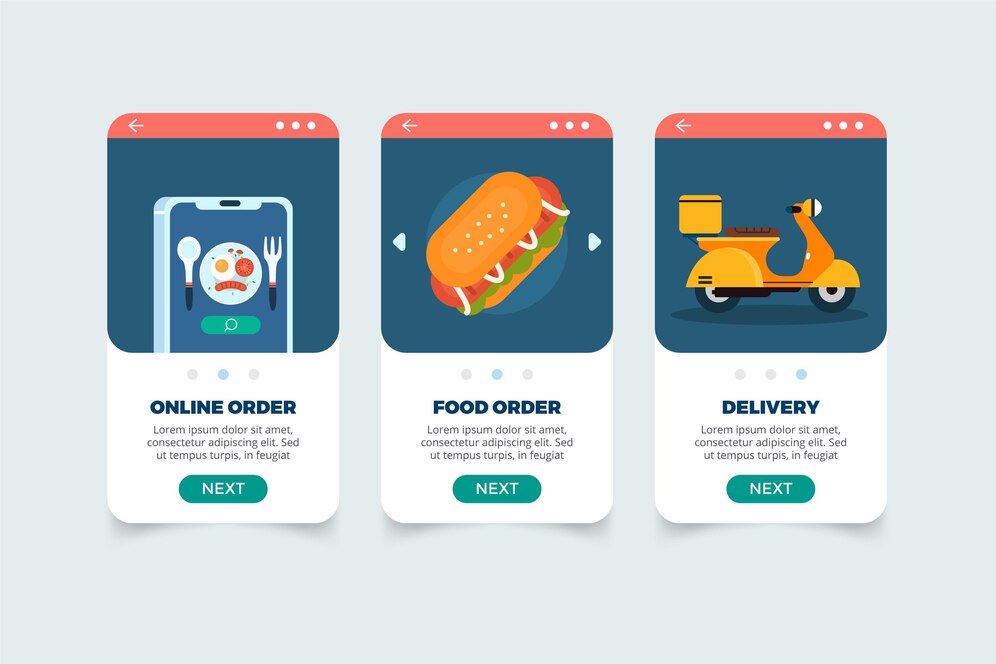Growing consumer demand for quick and convenient meal options has led to a boom in food delivery apps. As a restaurant owner or food business operator, having your app can help better compete and directly engage with digitally-savvy customers.
However, launching a successful food delivery app involves careful planning across many key aspects. You need to have clarity right from the start on critical considerations like target audience, feature set, mobile platforms, integrations, performance, security, UI/UX design, scalability, and overall costs.
This article will highlight the 9 most important factors of food delivery app you must keep in mind when planning or developing your food delivery app solution.
#1. Understanding Your Target Audience and Market
Having an in-depth understanding of your existing and potential new customer segments allows you to design an app that directly appeals to their preferences and meets their needs.
You need to research the demographic attributes like age groups, income levels, and geographic clusters of your target audience. Analyze psychographic factors as well to determine their lifestyle choices, values, and priorities.
Study your competitor food delivery apps and actual ordering data to identify market gaps or underserved needs you can cater to effectively through your app product and positioning. The more tailored it is to address your local community or customer base, the higher the chances of consumer adoption.
#2. Planning the Main Features and Functionality
The utility and versatility coming from features and functions available on your app have a huge influence on customer experience. After all, that is the interface for consumers to place orders or track deliveries.
Some table stakes features needed are:
- Intuitive category-wise listing of your entire food menu
- Smooth order placement flow with customization options
- Payment integration such as digital wallets, cards, or cash
- Promotions, deals, and loyalty program incentives
- Rating dishes and overall delivery experience
- Support tickets for complaints or refunds
Additionally, you can also incorporate social sharing of orders, push notification alerts, ordering for groups, and suggesting related dishes based on order history.
#3. Choosing the Right Mobile Platforms
Should your app be available just on iOS and Android smartphones or also on desktop websites? There are a few key considerations here from product development and business perspective.
A mobile app developed natively for iOS and Android allows tapping direct integration support for key functionalities like cameras, push notifications, and payments. It however entails building platforms separately.
Progressive web apps offer a responsive web experience across devices. It can help save time and cost compared to native app development but falls short on some device-specific features.
Evaluate skill sets and resources available in-house vis-à-vis outsourcing requirements for the platforms and features planned across form factors you want to support.
Progressive web applications deliver a responsive web experience on various devices, offering potential time and cost savings in comparison to developing native apps. However, they may lack certain device-specific features.
Conduct an assessment of the skill sets and resources within your organization in comparison to the outsourcing needs for the platforms and features intended for the diverse form factors you aim to support.
#4. Integrations With Essential Third-Party Tools
While your app’s front-end UX enables order management and tracking, the back-end process operations rely on integrations with external tools.
For your food business needs, it would typically involve:
- Accounting software managing inventory, purchasing, and reporting
- Payment gateway to securely process customer payments
- Email marketing platforms like MailChimp for promotions and engagement
- Google Analytics for actionable usage insights and monitoring
As you can anticipate, building and maintaining seamless integration touchpoints with third-party systems requires additional focus and resources.
#5. Focusing on Speed and Performance
Customers get easily frustrated by slow-loading or buggy apps. An app not performing well can even make potential diners opt for competitor offerings.
To offer a reliable and seamless experience through your app, concentrate efforts on:
- Reducing app download size by cutting unnecessary graphic assets
- Caching relevant data locally for quicker interface response
- Using a cloud infrastructure to handle order traffic spikes
- Implementing code optimization for faster rendering
Measure metrics like load times by page or function in real-world cellular and WiFi contexts across device types to benchmark and improve performance.
#6. Ensuring Security Standards and Compliance
Whether it is sensitive customer data like addresses or payment information, security risks can severely impact consumer trust.
For starters, ensure your app development partner or team implements measures like:
- Encryption of all API calls between app and servers
- Tokenization when processing payments via third-party gateway
- Appropriate data access controls across the toolchain
Additionally, compliance is required with industry regulations like PCI DSS for payment merchants or local food handling norms. Plan those audit and certification efforts ahead of the public launch.
#7. Designing an Intuitive UI/UX
Crucial customer-facing aspects like visually appealing design, seamless flows, and ease of use have a massive influence on adoption and retention.
Some best practices to follow for popular food delivery app development:
- Clean minimalist interface with an emphasis on imagery
- Logical categorization and groupings of menu listings
- One-click reordering from history and saved favorites
- Progressive order status with estimated delivery times
- Smart recommendations based on past purchases
The UI/UX element merits significant time and resources to perfect the customer experience delivering convenience, personalization, and reliability.
#8. Planning for Scalability and Growth
Starting small is prudent, but equally important is setting up the technical foundations to scale up to handle rapid growth.
Some planning aspects to address ahead of time:
- Building with microservices-based architecture
- Componentize functional modules for easier extendibility
- Design databases to support a larger inventory catalog
- Cloud infrastructure with auto-scaling configurations
- Options to tie up with multiple delivery partners
Well-architected flexibility ensures you can handle the potential surge in orders or geographical expansion without an overhaul of systems.
#9. Cost and Timeline of Development
For such an elaborate software product, development costs and timelines are directly linked to the scope and scale of platform features.
Indicative cost range:
- Mobile apps with basic ordering features – $25,000 to $50,000+
- Complex apps with custom workflows – $100,000+
- Timeline: 1200-3000+ person hours spread over 4-8 months
There are tradeoffs to consider while deciding between hiring in-house developers, delegating to specialized agencies, or collaborating with freelancers. Have clarity on capabilities needed to plan and accomplish the roadmap.
Conclusion and Next Steps
Launching a food delivery app successfully requires coordination across many technical and business areas – defining the customer audience, detailing features accordingly, engineering for scale, and focusing on performance metrics.
It is essential to take the long view, even as you start learning. Foresight in the initial planning stages allows you to build with flexibility for future growth factored in.
As a first step, thoroughly evaluate the 9 key factors covered to draft an app product outline aligned to your restaurant or food business needs. With that foundation design in place, explore available capabilities for execution through in-house teams, agencies, or outsourced collaborations.
The potential ROI from higher customer engagement levels offered by a purpose-built food delivery app makes the effort and investment extremely worthwhile. Reach out if you need any help with planning or developing a solution tailored to your unique needs and growth strategy.
The potential return on investment (ROI) arising from increased customer engagement through a custom food delivery application justifies the effort and investment involved. Feel free to contact us if you require assistance in planning or developing a solution specifically tailored to your unique needs and growth strategy.



